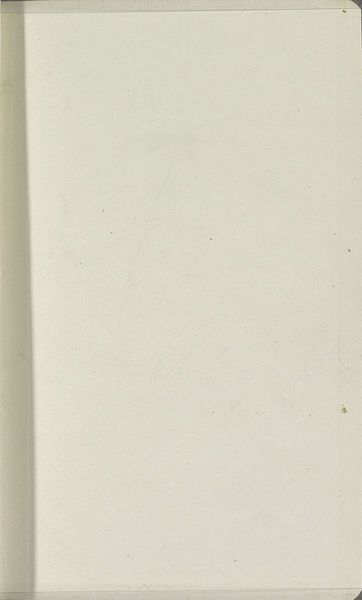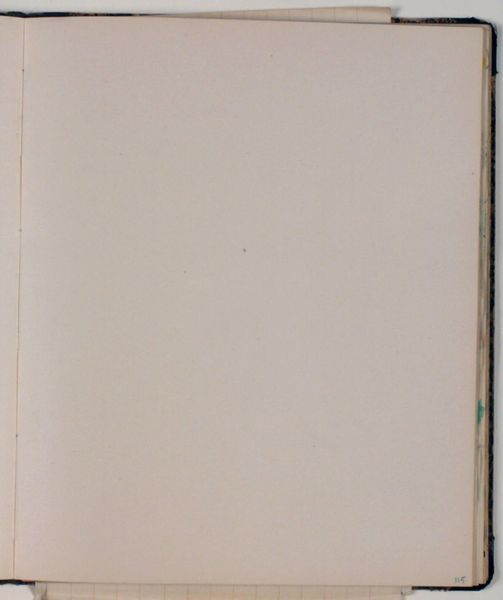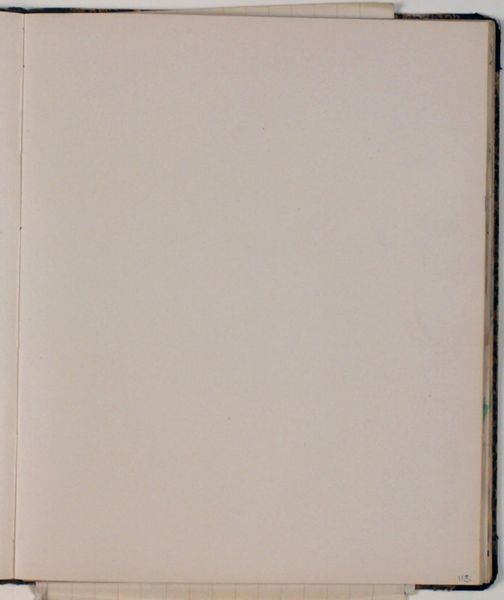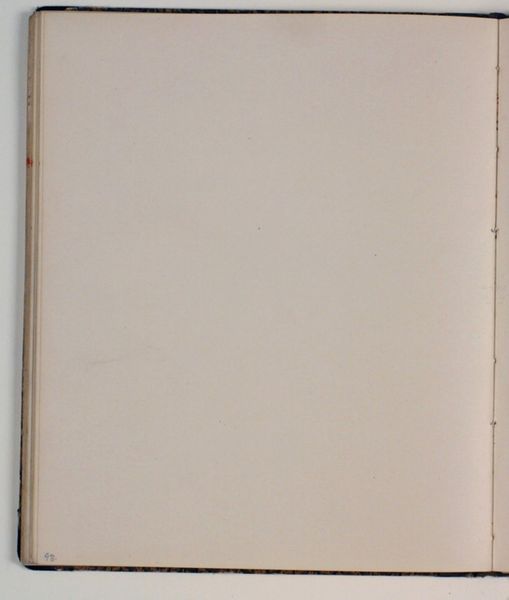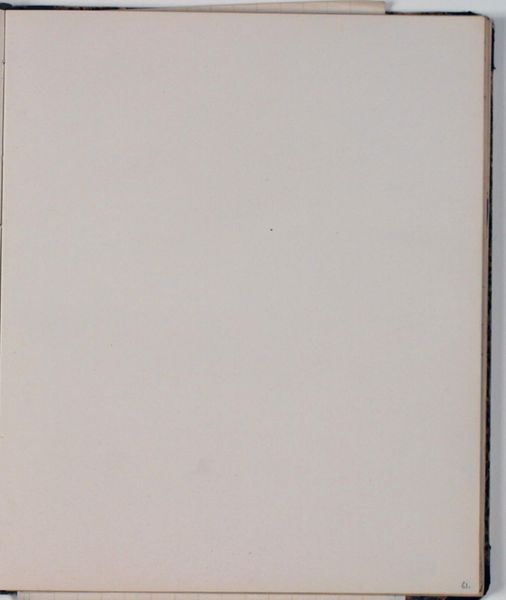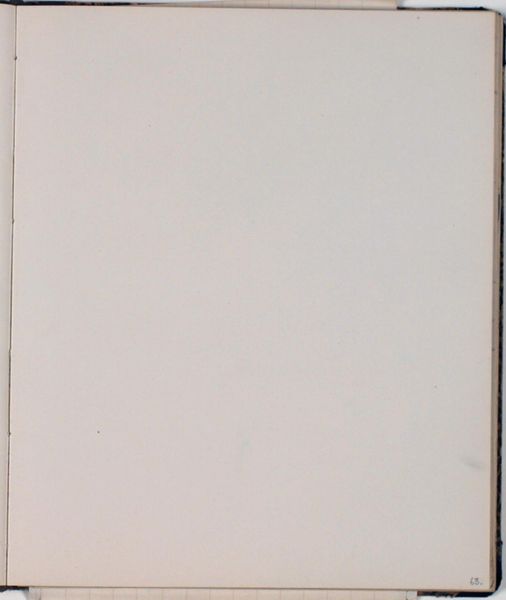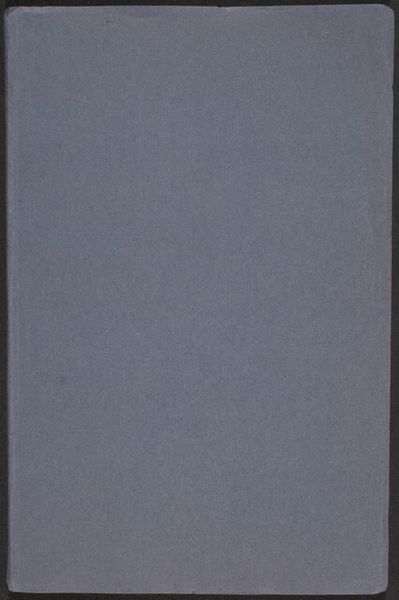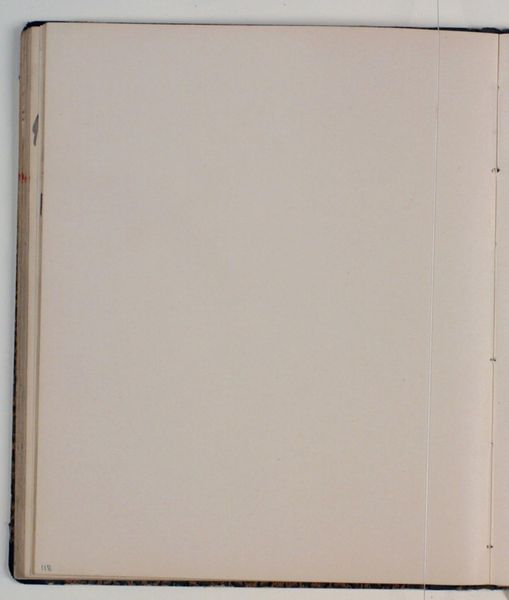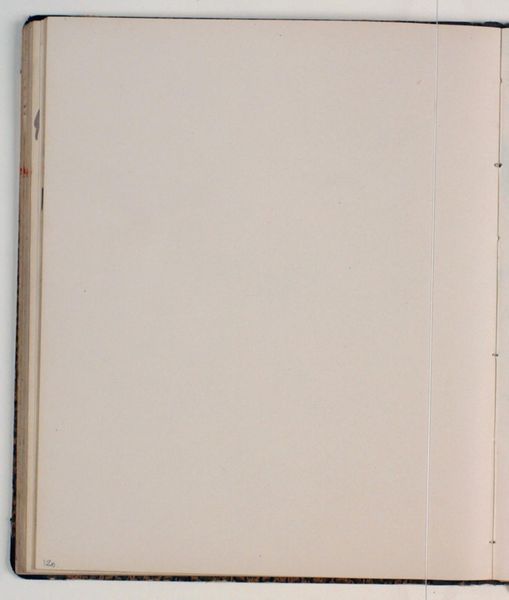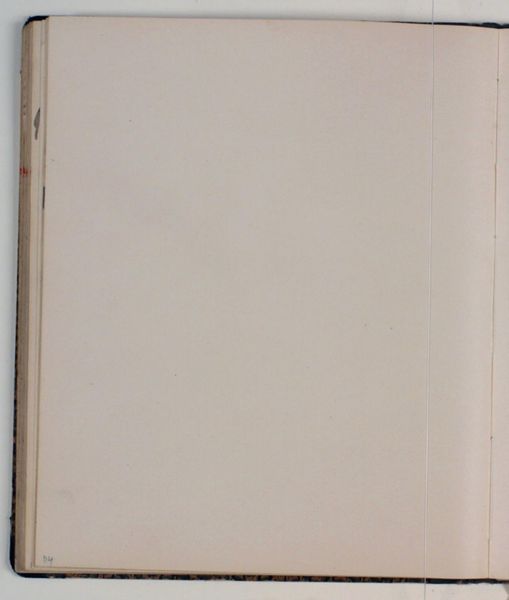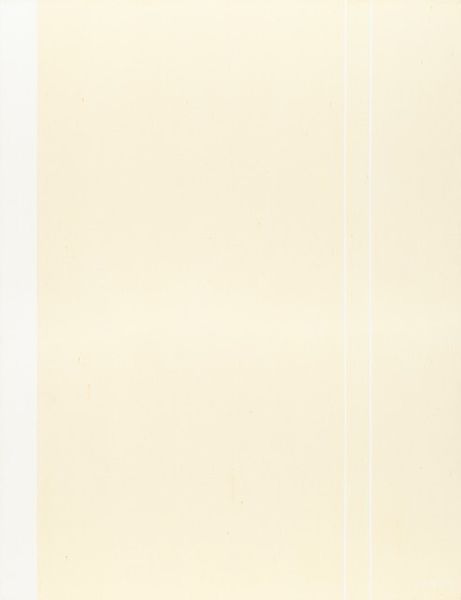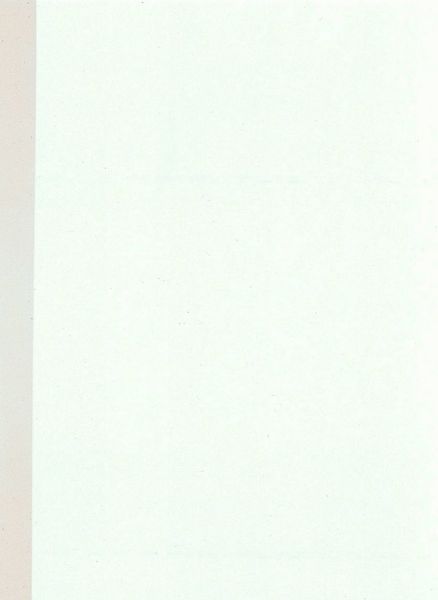
Copyright: Jean Degottex,Fair Use
Curator: We’re standing before Jean Degottex's "Composition," a 1975 watercolor. What strikes you about it? Editor: An overwhelming sense of sparseness. It's almost meditative in its simplicity, the beige watercolor paper broken only by these slightly irregular, vertical grey lines. Stark. Is it supposed to evoke serenity, perhaps? Curator: It's intriguing how the lines, though seemingly simple, dictate the entire composition. The negative space becomes as significant as the painted elements. The eye traces their descent, noting the subtle shifts in tone and width. It provokes questions about intentionality versus chance. Editor: But doesn’t this sparseness reflect the minimalist movement's broader socio-political anxieties? A retreat from the excess and spectacle that marked so much of art before, creating almost empty signifiers for a society drowning in content. I mean what is the historical or political statement this evokes for our listeners today? Curator: An interesting point. Perhaps the austerity reflects a deliberate deconstruction, forcing us to confront the very essence of mark-making, the act of creation itself, by its essential elements: line, color, and ground. The materiality here has its own power. Editor: And to me, that echoes larger conversations about resources, about what we consider necessary, in an era of unprecedented ecological crisis and mass economic inequalities. What responsibility do we have as image creators when representation is often intertwined with destructive practices and consumption? Curator: So, while appearing unassuming, the work stimulates a complex interplay between formalism and existential inquiry. Editor: Absolutely. It uses its apparent emptiness to hold larger reflections about agency, presence, and accountability in both art and broader contexts. This, to me, creates a potent paradox. Curator: A paradox perhaps that reveals that art is as much about what it withholds, as what it shows. Thank you. Editor: Indeed. Thank you for your insight.
